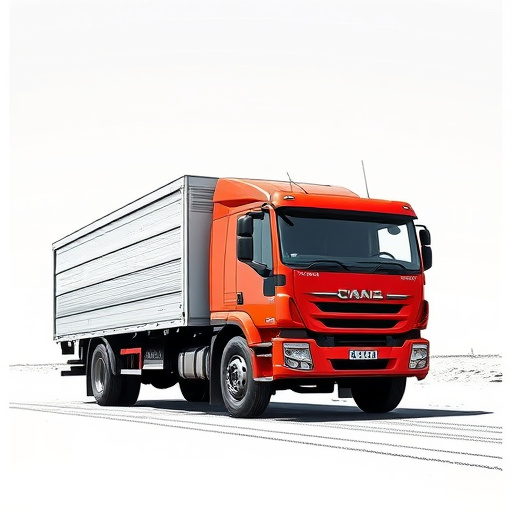Heavy-duty trucks require robust batteries capable of handling extreme conditions and power demands. Selecting the right battery size involves understanding peak power needs for engine startup, lighting, accessories, and operational tasks. Key factors include electrical system requirements, climate, usage frequency, and duration. 12V batteries are cost-effective for urban driving, while 24V systems offer higher power output for long-haul trucking. Balancing performance and efficiency is crucial; higher capacity batteries with better CCA and Ah ratings handle demanding conditions like frequent starts and towing. Regular maintenance, including corrosion checks and terminal cleaning, extends battery life. Recycling lead-acid batteries mitigates environmental impact, while advancements in lithium-ion polymer and solid-state batteries promise increased energy density, safety, and charging speed for a more sustainable future.
In the realm of heavy-duty trucking, optimal battery sizes are a critical component for efficient operations. Understanding the demands placed on truck batteries, factoring in environmental conditions and vehicle load, is essential for choosing the right capacity. This article explores these considerations, from common battery sizes to performance nuances and environmental impacts, guiding fleet managers in making informed decisions about their truck’s power source. Discover the game-changing potential of advanced battery technology for your fleet’s longevity and sustainability.
- Understanding Truck Battery Demands
- Factors Influencing Optimal Battery Size
- Common Battery Sizes in Heavy-Duty Trucks
- Performance Considerations for Different Battery Capacities
- Longevity and Maintenance Implications
- Environmental Impact and Recycling
- Future Trends in Truck Battery Technology
Understanding Truck Battery Demands

Heavy-duty trucks place significant demands on their batteries, serving as the heart of electrical systems that power essential components like engines, lights, and auxiliary equipment. Unlike lighter vehicles, these trucks often operate in demanding environments, facing extreme temperature fluctuations and long, grueling workdays. Consequently, they require truck batteries with exceptional durability and high cold cranking amps (CCA) to meet these rigorous needs.
Understanding the specific demands of a truck’s electrical system is crucial when selecting an optimal battery size. This involves considering factors such as peak power requirements during engine startup, continuous voltage demand for lighting and other accessories, and the overall energy needed for the vehicle’s operational tasks. By accurately assessing these factors, fleet managers and owners can choose batteries that provide ample capacity to meet current needs while accounting for potential future upgrades or changing operational patterns.
Factors Influencing Optimal Battery Size
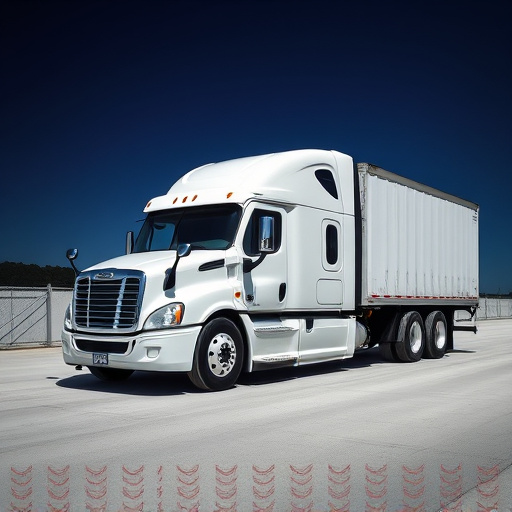
Several key factors play a crucial role in determining the optimal battery size for heavy-duty trucks, ensuring they can meet their power demands efficiently. One of the primary considerations is the truck’s electrical system and its energy requirements. Heavy-duty trucks have diverse power needs, ranging from powering lights, alarms, and navigation systems to operating complex machinery and auxiliary equipment. Thus, understanding the total electrical load is essential in selecting a battery capable of delivering sufficient amperage and voltage.
Another influential factor is the operating environment and climate. Extreme temperatures can significantly impact battery performance and lifespan. Cold climates may reduce battery capacity, so using deep-cycle batteries designed for such conditions becomes necessary. Additionally, the frequency and duration of truck usage are critical. Long hauls or frequent stops and starts require batteries that can handle high discharge rates without degradation. Therefore, a thorough analysis of these factors is vital to choosing the right truck battery size.
Common Battery Sizes in Heavy-Duty Trucks
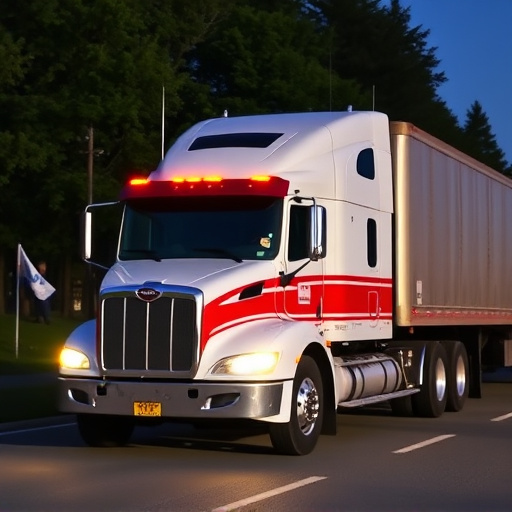
In the realm of heavy-duty trucks, selecting the optimal battery size is a crucial consideration for ensuring reliable performance and minimizing downtime. Common battery sizes in this segment typically range from 12V to 24V systems, with several popular options catering to diverse needs. For instance, many medium-duty trucks often utilize 12V batteries, offering a balance between capacity and cost-effectiveness. These batteries are well-suited for tasks involving frequent starts and stops, such as city driving or fleet operations.
On the other hand, long-haul heavy-duty trucks demand more robust solutions. Here, 24V battery systems gain prominence due to their higher power output and ability to handle the intense demands of prolonged driving intervals. This elevated voltage accommodates the increased electrical requirements of advanced truck features, such as powerful lighting systems, heating, and modern infotainment setups, ensuring a seamless driving experience even under extreme conditions.
Performance Considerations for Different Battery Capacities
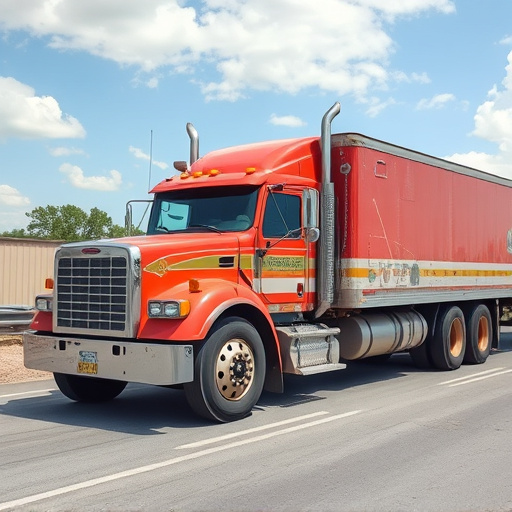
When it comes to heavy-duty trucks, choosing the optimal battery size isn’t just about power; it’s a delicate balance between performance and efficiency. Lower capacity batteries may provide ample juice for lighter tasks, but they’ll struggle under demanding conditions like frequent starts, long idling periods, or towing heavy loads. Conversely, higher capacity batteries offer more endurance and power, making them ideal for prolonged operations and harsh environments.
Performance considerations should guide selection. For instance, a truck requiring quick engine starts and rapid acceleration will benefit from a battery with higher cold cranking amps (CCA). On the other hand, applications demanding sustained power during long hauls or frequent electrical draws should opt for batteries with larger ampere-hour (Ah) ratings. Understanding these nuances ensures that the chosen truck battery meets—and exceeds—the demands of the vehicle’s specific operational needs.
Longevity and Maintenance Implications
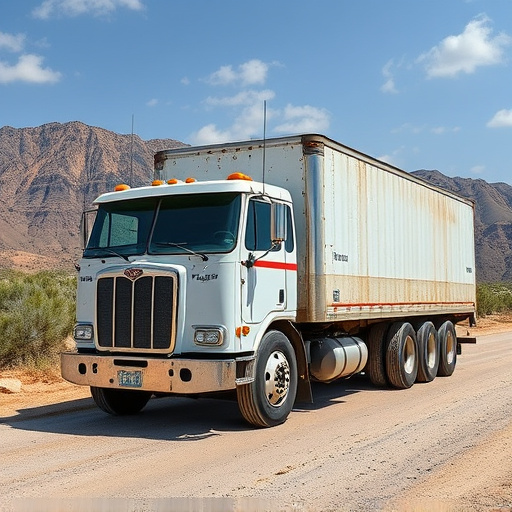
The longevity and maintenance considerations for heavy-duty truck batteries are crucial aspects that impact overall vehicle performance and operational costs. These batteries, due to their constant use and demanding nature, require regular care to ensure optimal life expectancy. Proper maintenance includes routine checks for corrosion or leaks, ensuring a clean and tight connection between the battery terminals, and keeping the area around the battery free from debris.
Regular maintenance practices can significantly extend the lifespan of a truck battery, which in turn reduces replacement costs. It’s essential for fleet managers to establish consistent maintenance schedules and employ advanced battery management systems that monitor voltage levels, current flow, and temperature to prevent overcharging or undercharging, both of which can damage the battery. By focusing on these aspects, heavy-duty trucks can rely on their batteries to deliver reliable starting power and sustain performance throughout long shifts and harsh operating conditions.
Environmental Impact and Recycling
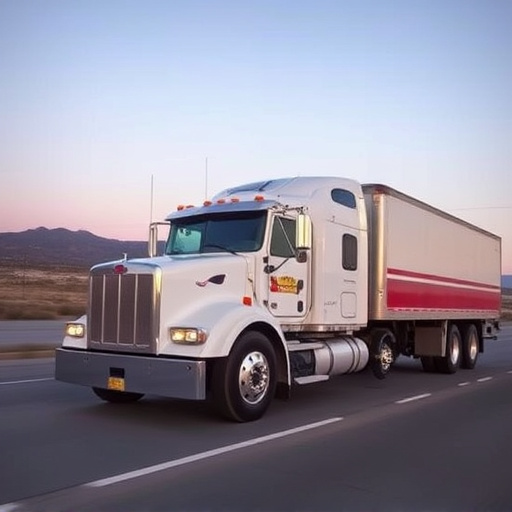
The environmental impact of truck batteries is a growing concern in the heavy-duty trucking industry. Traditional lead-acid batteries, commonly used in trucks, have significant ecological consequences due to their production and disposal. Mining and refining processes for lead and other materials contribute to land degradation and water pollution. Moreover, improper disposal of spent batteries can release toxic substances into ecosystems, posing risks to wildlife and nearby communities.
Recycling is a vital strategy to mitigate these environmental effects. Many modern truck batteries are designed with recycling in mind, incorporating more recyclable materials and modular designs that facilitate component-level recycling. This approach not only reduces the demand for virgin resources but also minimizes the amount of hazardous waste generated. By adopting eco-friendly battery technologies and efficient recycling practices, the trucking industry can contribute to a more sustainable future while ensuring reliable power for its vehicles.
Future Trends in Truck Battery Technology
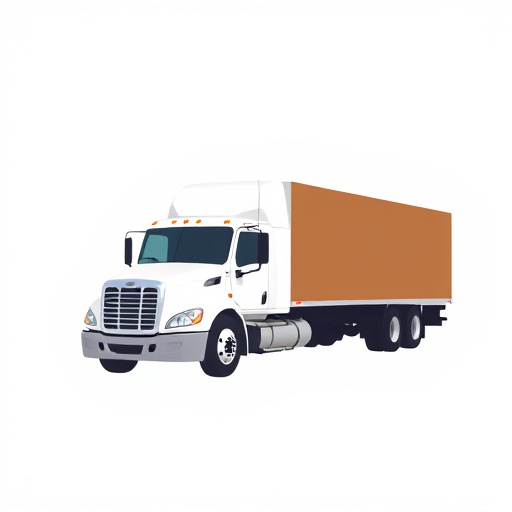
The future of truck battery technology looks promising, with innovations aimed at enhancing performance and efficiency. Researchers are exploring advanced battery chemistries, such as lithium-ion polymers and solid-state batteries, which offer higher energy density and improved safety compared to traditional lead-acid batteries. These cutting-edge technologies promise longer lifespans and faster charging times, addressing key pain points for heavy-duty truck operators.
Additionally, the integration of smart management systems and wireless charging infrastructure is on the horizon. These developments will enable real-time monitoring of battery health, optimize charging cycles, and potentially allow for in-motion charging, reducing downtime and increasing operational flexibility. As electric vehicle technology continues to evolve, we can expect to see even more efficient and powerful truck batteries, making heavy-duty transportation more sustainable and cost-effective.
Choosing the optimal battery size for heavy-duty trucks involves balancing performance, longevity, environmental impact, and future trends. By understanding specific demands, considering factors like temperature and duty cycles, and exploring advancements in truck battery technology, fleet managers can ensure their vehicles operate efficiently while minimizing maintenance costs and ecological footprints. Investing in the right battery size is a key step towards maximizing the overall lifespan and productivity of heavy-duty trucks.
